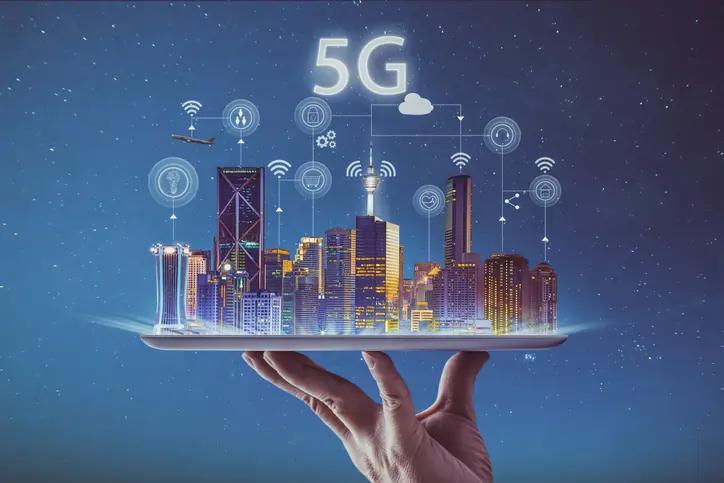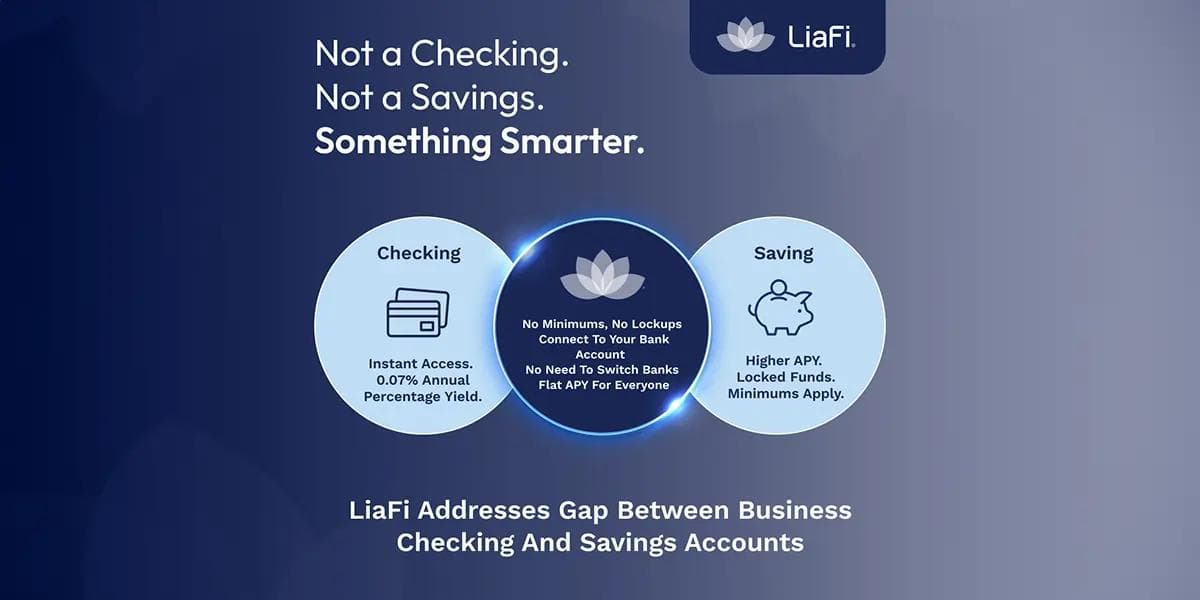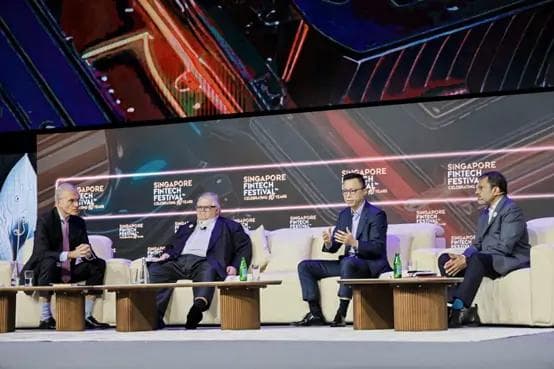5G Technology: A Comprehensive Report on its Impact by 2025
5G Technology: A Comprehensive Report on its Impact by 2025
Published by Jessica Weisman-Pitts
Posted on January 27, 2025

Published by Jessica Weisman-Pitts
Posted on January 27, 2025

The introduction of 5G technology marks a significant advancement in communication networks, offering unprecedented speed, connectivity, and capacity. This report delves into the transformative impact of 5G on various industries, focusing on economic effects, sector-specific transformations, market growth projections, and emerging trends. The insights provided are backed by authoritative sources to illustrate the depth and breadth of 5G's impact worldwide.
Economic Contribution and Market Growth of 5G Technology
5G technology's contribution to the global economy is already becoming evident and is set to intensify across numerous sectors. In the United States, projections estimate that 5G will catalyze up to $2.7 trillion in new sales across major industries from 2021 to 2025. This impact will manifest across various industries, with the information technology and telecommunications sectors poised to capture a significant share. Specifically, the ICT sector is anticipated to contribute $251.2 billion to the country's GDP, reinforcing the pivotal role of 5G in the national economy (Accenture Study).
Furthermore, the broader economic benefits of 5G are evident in the projected addition of $403.9 billion in sales revenue across different industries. This highlights the potential for enhanced service offerings and operational efficiencies that 5G enables, promising substantial returns on investment for businesses adopting this technology.
On a global scale, the evolution of 5G infrastructure is characterized by remarkable growth projections. Valued at USD 25.69 billion in 2023, the 5G infrastructure market is forecasted to escalate to a staggering USD 590.18 billion by 2032, supported by a Compound Annual Growth Rate (CAGR) of 42.7%. This exponential growth underscores increased global reliance on enhanced connectivity solutions provided by 5G networks (Market Report).
In addition to infrastructure, the 5G system integration market is similarly experiencing significant growth. Rated at USD 15.93 billion in 2024, it is expected to grow to USD 20.25 billion by 2025, while maintaining a CAGR of 27.10% over the forecast period of 2025 to 2033. This growth reflects the urgent need for integrating traditional systems with advanced 5G networks, thereby streamlining operations across industries (Straits Research).
Overall, 5G technology is revolutionizing the economic landscape by facilitating unprecedented levels of connectivity, driving efficiency, and fostering innovation across industries. Its contributions to both the national and global economic milieu are a testament to its transformative power, distinguishing 5G as a cornerstone of future technological advancements.
Sector-Specific Transformations Enabled by 5G Technology
As industries adapt to the rapid advancements in communication technology, 5G is emerging as a key enabler of transformational change. Its capabilities are redefining how sectors operate, fostering innovation, increasing efficiency, and ultimately shaping the future industrial and commercial landscapes.
Manufacturing Sector
The advent of 5G technology in the manufacturing sector is not just a technological uplift, but a fundamental shift in operational paradigms. The integration of 5G facilitates smart manufacturing processes where factories become increasingly automated, leveraging data-driven insights for precision and efficiency. The resulting productivity gains of up to 30% stem from enhancements in flexibility, scalability, and responsiveness of manufacturing systems (Accenture Study).
Real-time data communication between machines aids in predictive maintenance, reducing the likelihood of unexpected downtimes and extending the useful life of machinery by 20%. This technology also supports the creation of digital twins—virtual representations of physical assets—that are used for simulation and analysis, thereby reducing errors and optimizing production processes.
Moreover, 5G's high-bandwidth capabilities allow seamless connectivity within factories, eliminating the lag associated with older wireless technologies. This ensures uninterrupted operation of complex manufacturing networks, vital for just-in-time production systems that minimize warehouse inventory and align closely with demand.
Retail Sector
In retail, the capability of 5G to empower enhanced customer-centric experiences is set to redefine shopping. Enhanced broadband facilitates high-speed data transfer necessary for augmented reality (AR) applications, providing immersive shopping experiences with virtual fitting rooms and real-time product demonstrations. Interactive displays powered by 5G transform traditional retail spaces into dynamic environments, inviting increased consumer engagement and driving conversions (Accenture Study).
Artificial Intelligence (AI) and machine learning algorithms, enabled by 5G speeds, personalize the shopping experience by analyzing consumer behavior and preferences in real-time. This insight allows retailers to tailor offers and recommendations, fostering greater customer loyalty and enhancing overall satisfaction. Retailers also benefit from optimized logistics and supply chain management, as 5G provides the connectivity required for synchronizing inventory data across geographies, facilitating efficient stock management and reducing excess spending.
Healthcare Sector
5G is a transformative force in healthcare, where its implementation supports the seamless transfer and management of massive health datasets. Remote diagnostics, coupled with high-resolution imaging transmitted over 5G networks, allow medical practitioners to make informed decisions faster, thus improving patient outcomes (TechTarget Overview).
The low-latency characteristic of 5G is crucial for the advancement of telemedicine, especially in remote or underserved areas. It ensures that virtual consultations are conducted without delays, fostering inclusivity in healthcare access. 5G enables the development of haptic technology, which can facilitate tactile feedback in remote surgeries, potentially reducing the geographical barriers to expert medical procedures. Additionally, continuous patient monitoring is enhanced with wearable IoT devices, providing real-time health data analytics that aid preventive and personalized medicine.
Smart Cities and Public Sector
Smart cities are bolstered by 5G's ability to interconnect a myriad of IoT devices, enhancing urban services and infrastructure management. Real-time data analytics derived from connected traffic systems result in improved transit management, reduced congestion, and optimized energy usage—key components of sustainable urban living (TechTarget Overview).
City-wide deployment of sensors feeding data through 5G networks leads to improved public safety mechanisms, environmental monitoring, and utilities management. Enhanced public Wi-Fi services ensure that residents and visitors can access information and services seamlessly, bridging digital divides and fostering community engagement.
With this in-depth exposition of sector-specific transformations powered by 5G technology, industries and public sectors alike are poised for a new era of operational efficiency and innovation. As infrastructural and technological advancements continue, the implications of 5G will extend far beyond connectivity to engender holistic improvements in society and business alike.
Emerging Trends and Market Predictions for 5G Technology
As global adoption of 5G technology continues to accelerate, several emerging trends and future market predictions are reshaping industries and consumer behavior. These trends highlight the trajectory of growth and innovation that 5G is expected to catalyze in various sectors between now and 2025.
Growth in Private 5G Networks
A significant trend is the adoption of private 5G networks, particularly within industries that require secure, high-performance connectivity. Private networks offer dedicated bandwidth, enhanced data security, and control over network parameters, which are essential for enterprise applications such as smart manufacturing, logistics, and industrial automation. The global private 5G market is projected to grow at a CAGR of 65.4% through 2030, driven largely by the adoption of IoT applications. Industries rely on these networks to deploy advanced IoT solutions without the interference typically associated with public networks (TechTarget Overview).
5G and IoT Convergence
The convergence of 5G with Internet of Things (IoT) technologies is set to revolutionize both consumer and industrial applications. The ultra-reliable, low-latency communications afforded by 5G enables real-time data processing and analytics, critical for IoT environments. Smart home devices, autonomous vehicles, and industrial sensors are anticipated to benefit significantly from seamless connectivity, contributing to the proliferation of IoT ecosystems worldwide. By 2025, 5G-enabled IoT solutions are expected to result in massive data traffic increases, with 5G users projected to consume over 1.2 trillion exabytes of data annually, surpassing 4G data traffic in subsequent years (ABI Research).
Market Growth Projections and Economic Impact
The economic opportunities spawned by 5G are multifaceted, with telecommunications companies expanding their service offerings to capture new market segments. The global 5G infrastructure market is anticipated to grow substantially, achieving a valuation of USD 590.18 billion by 2032, while maintaining a high CAGR of 42.7% (Market Report). Furthermore, the integrative role of 5G in digital transformations presents businesses with avenues to innovate product and service delivery, thereby boosting productivity and creating new revenue streams.
Enhanced Consumer Experiences
Enhanced consumer experiences are emerging as a pivotal area where 5G's potential is showcased. In sectors like entertainment and gaming, 5G facilitates immersive augmented and virtual reality experiences, allowing consumers to engage with multimedia content in unprecedented ways. The ability to stream high-resolution content instantaneously is poised to transform how media is consumed and experienced, paving pathways for new applications and use cases. Additionally, AI-driven personalizations, powered by 5G, enable enterprises to tailor experiences to individual users, fostering deeper consumer engagement and brand loyalty.
Public Safety and Disaster Management
In public safety and disaster management, 5G networks provide robust solutions by allowing first responders to communicate seamlessly and access critical information in real-time. The high bandwidth and low latency of 5G support applications such as drone-assisted reconnaissance and remote-controlled emergency interventions, thus improving response efficiency and effectiveness. By providing a reliable communication infrastructure, 5G enhances the coordination and execution of disaster responses and contributes to saving lives.
These emerging trends and market predictions underscore the transformative impact of 5G technology across industries. As adoption grows, the manifestations of these trends will become more prominent, fundamentally altering the way in which businesses operate, communicate, and compete in a digitally-driven world.
Future Implications and Strategic Considerations for 5G Technology
The widespread adoption of 5G technology is poised to usher in a new era of connectivity and digital transformation, with profound implications across industries and society. As stakeholders navigate this evolving landscape, several strategic considerations must be addressed to fully leverage the benefits of 5G and mitigate potential challenges.
Strategic Investments in Infrastructure
As 5G adoption accelerates, significant investments in telecommunications infrastructure are imperative to support network expansion and enhance coverage. Governments and private enterprises alike must collaborate to build robust infrastructure that can accommodate the vast data demands and connectivity requirements of a 5G-enabled environment. This includes upgrading network equipment, expanding fiber optic deployments, and investing in new spectrum allocations. Successful implementation will require widespread collaboration between stakeholders, including service providers, tech companies, and regulatory bodies. The goal is to ensure equitable access and minimize digital divides (Market Report).
Addressing Security and Privacy Concerns
With the deployment of 5G networks comes increased vulnerability to cyber threats due to the large number of connected devices. Securing these networks against potential threats is paramount to maintaining user trust and safeguarding sensitive data. Implementing comprehensive cybersecurity measures, such as advanced encryption protocols and continuous monitoring systems, is crucial. Additionally, establishing regulatory frameworks that address data privacy and establish accountability is key to addressing potential security risks. Ongoing investments in security initiatives will be required to combat sophisticated cyber threats and maintain network integrity (TechTarget Overview).
Embracing Innovation and Research
The evolution of 5G technology is catalyzing an influx of innovation, particularly in IoT ecosystems, AI applications, and edge computing. To fully harness the potential of these technologies, continuous research and development efforts are necessary to explore new applications and advance existing capabilities. Encouraging research initiatives and fostering partnerships between academia, industry, and government can drive innovation and accelerate the development of disruptive technologies powered by 5G. Prioritizing investments in innovation ensures that businesses remain competitive in a rapidly changing technological landscape (TechTarget Overview).
Navigating Regulatory and Policy Changes
As 5G technology becomes more integrated into daily operations, regulatory and policy considerations play a significant role in shaping its trajectory. Policymakers must adapt regulations to accommodate new technologies while ensuring fair competition and safeguarding consumer interests. Furthermore, international collaboration on standards and regulations is crucial to facilitate global harmonization and enable cross-border data exchanges. Keeping abreast of policy developments and proactively engaging with regulators can position businesses to respond swiftly to changes and harness new opportunities emerging from 5G advancements (Accenture Study).
Promoting Sustainable Practices
Sustainability remains a critical focus as 5G deployment progresses, with an emphasis on minimizing environmental impact while enhancing operational efficiency. Incorporating energy-efficient designs into network infrastructure, optimizing resource utilization, and supporting green technologies are key strategies for fostering sustainable growth. As businesses adopt 5G solutions, integrating sustainability initiatives into strategic planning ensures alignment with global climate goals and reinforces corporate responsibility (ABI Research).
In summary, the future implications of 5G technology require a multi-faceted approach that embraces innovation, addresses security and privacy challenges, and aligns with strategic investment, regulatory, and sustainability considerations. By navigating these factors thoughtfully, industries and societies can maximize the benefits of 5G while fostering an ecosystem that supports sustainable economic growth and technological advancement.
The deployment and integration of 5G technology represent a pivotal advancement in the realm of communication networks, with the potential to transform industries and drive global economic growth. As we witness this technological evolution unfold, the effects of 5G are far-reaching, fostering enhanced connectivity, efficiency, and innovation across various sectors. From manufacturing and healthcare to retail and smart cities, the applications and benefits of 5G technology highlight its integral role in shaping the future landscape of technology-driven societies.
The economic contributions of 5G are underscored by significant market growth projections and the creation of new sales opportunities across industries worldwide. With increasing investments in infrastructure and the exponential growth of the 5G market, stakeholders are well-positioned to tap into the vast opportunities that 5G presents. This is further amplified by the convergence of IoT, AI, and other cutting-edge technologies—a convergence enabled by the power and reliability of 5G.
However, as we embrace the advantages of 5G, it is essential to address the inherent challenges, including security and privacy concerns, infrastructural demands, and the necessity for regulatory adaptation. Strategic planning and collaboration among various stakeholders, including governments, industry leaders, and regulatory bodies, are required to ensure that the deployment of 5G is secure, equitable, and sustainable.
Ultimately, the successful adoption of 5G technology holds the promise of ushering in a new era of innovation that transcends traditional operational boundaries and sets the stage for unprecedented advancements. As societies, industries, and technology ecosystems collectively navigate this transformative journey, the potential for positive change and progress is boundless, heralding a future where connectivity and innovation converge to enhance the world in which we live.
The path forward involves leveraging these insights and capitalizing on emerging opportunities, ensuring that 5G continues to drive growth and lead us into a future defined by robust technological enhancement and societal advancement.
Explore more articles in the Top Stories category











